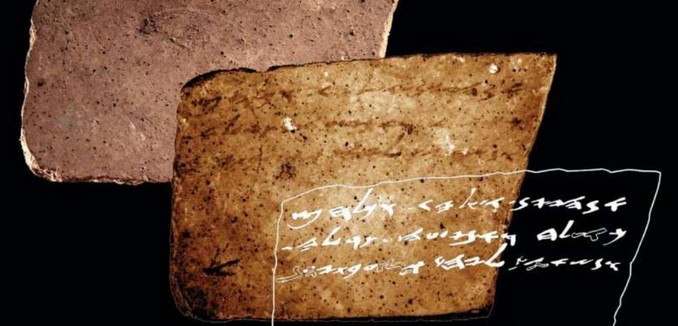Previously unseen Hebrew writing from the First Temple-era that reaffirms a historical Jewish connection to Israel has been discovered on pottery from almost 3,000 years ago, The Times of Israel reported Wednesday.
The ink-on-clay piece of pottery, called an ostracon, was originally discovered in the 1960s in the city of Arad, near the Negev Desert. Over 100 ostraca inscribed in biblical Hebrew were found in the citadel, which is the largest and richest collection of inscriptions from the biblical period ever discovered in Israel.
For the past 50 years, the shards have been prominently displayed at the Israel Museum, after leading scholars had deciphered the legible writings on the pottery. But now, using revolutionary technology in multispectral imaging, researchers at Tel Aviv University have found a way to illuminate previously hidden messages on the ostraca that could shed light on ancient Hebrew history.
The researchers discovered three lines of writing from two and a half millennia ago – containing commands regarding supply of commodities (wine, oil and flour) to military units – that would otherwise have been lost to the annals of history.
The discovery raises the possibility that other “blank” pottery from the same period may also contain previously unseen texts and a wider re-examination of the pieces are in planning.
“My heart aches when thinking of all the inscriptions [on finds believed to be blank] that were perhaps thrown into the trash, because it was impossible to discern them in the field,” Arie Shaus, a doctoral student at Tel Aviv University, told The Times of Israel.
Last September, scientists reconstructed a 2,000-year-old biblical text from a burned scroll found in Israel that is thought to contain the earliest known copy of biblical scriptures in standardized form.
A month later, The Israel Antiquities Authority unveiled an ancient papyrus from the First Temple period containing the earliest Hebrew mention of Jerusalem outside the Bible.
[Photo: Twitter ]




